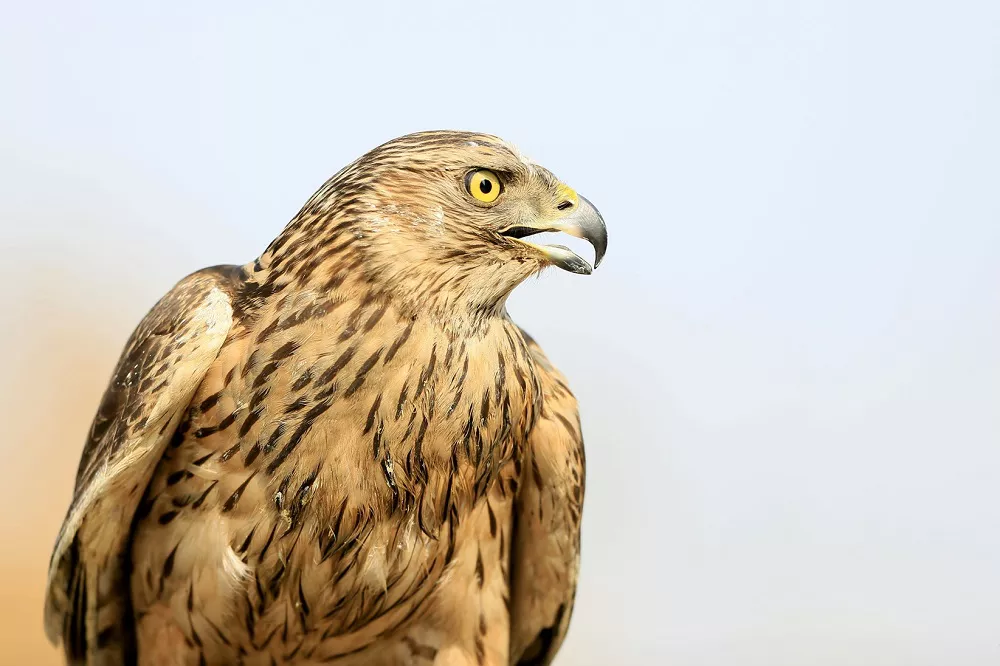The goshawk (Accipiter gentilis) is a powerful and agile bird of prey, found throughout much of the Northern Hemisphere. Here is a detailed description of its appearance:
- Size and Shape:
Goshawks are medium to large-sized raptors, with a wingspan of up to 120cm and a length of 48-61cm. They have broad, rounded wings and a long, fan-shaped tail, which helps them navigate through dense forests and woodlands. Their legs are long and strong, with powerful talons, which they use to catch and kill their prey.
- Plumage:
The goshawk has a distinctive and striking plumage, with a blue-grey back and wings, and a white belly with bold, dark stripes. The head is relatively large and rounded, with a dark, hooked beak and piercing yellow eyes. Juvenile goshawks have brownish-grey feathers on the back and wings, with a streaked underbelly and a pale, almost white eyebrow.
- Behavior:
Goshawks are formidable hunters, known for their speed and agility. They hunt a variety of prey, including other birds, mammals, and reptiles, and are known to take prey as large as hares and rabbits. They hunt by using stealth and surprise, often flying low and fast through dense vegetation to surprise their prey.
- Habitat:
Goshawks are found in a wide range of habitats, from dense forests and woodlands to open moorland and heathland. They are most commonly found in northern regions, where they breed in coniferous forests and montane woodlands.
- Conservation Status:
Goshawks are considered a species of least concern by the International Union for Conservation of Nature (IUCN), although populations have declined in some areas due to habitat loss and persecution by humans.
In summary, the goshawk is a powerful and striking bird of prey, with a distinctive blue-grey and white plumage, a long, fan-shaped tail, and piercing yellow eyes. They are formidable hunters, known for their speed and agility, and can be found in a wide range of habitats across the Northern Hemisphere.


 Facebook
Facebook  Instagram
Instagram  Youtube
Youtube 